Ischemic Stroke Secondary to Dynamic Vertebral Artery Stenosis: Case Report and Review of the Literature
- PMID: 35003995
- PMCID: PMC8724019
- DOI: 10.7759/cureus.20167
Ischemic Stroke Secondary to Dynamic Vertebral Artery Stenosis: Case Report and Review of the Literature
Abstract
Ischemic stroke secondary to dynamic vertebral artery stenosis or occlusion, also known as "bow hunter's syndrome," is a rare stroke mechanism. We report a case of a 24-year-old man with multiple hereditary exostosis (MHE) diagnosed at childhood. His first presentation to a neurologist was due to neck pain and clinical syndrome suggestive of ischemia in the vertebrobasilar territory. A therapeutic occlusion was done successfully without complication. The patient was discharged two days later on aspirin alone. In follow up one year later he continued to be symptom free. Moreover, this stroke mechanism has been reported extensively in the literature in isolation or secondary to many underlying diseases. In total, there are 168 cases reported in the published English literature, in either case reports or small series. In this review, we found that by far, vertebral artery occlusion at the atlanto-axial (C1-2) level dominated most reported cases. The most frequent presentation that led to further investigation was syncope or pre-syncope provoked by head rotation to one side. To our knowledge, there is no previous report of any stroke syndrome related to MHE before our case. In this paper, we report the first case secondary to MHE and review the literature up to date since the first reported case in 1952.
Keywords: bow hunter syndrome; dynamic vertebral artery stenosis; ischemic stroke; stroke; vertebral artery compression; vertebral artery occlusion.
Copyright © 2021, Bukhari et al.
Conflict of interest statement
The authors have declared that no competing interests exist.
Figures
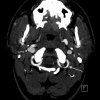
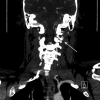
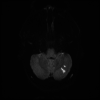

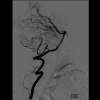
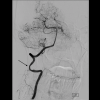
Similar articles
-
Vertebro-basilar stroke due to Bow-Hunter syndrome: an unusual presentation of rotatory atlanto-axial subluxation in a fourteen year old.Br J Neurosurg. 2023 Aug;37(4):808-810. doi: 10.1080/02688697.2019.1668538. Epub 2019 Sep 22. Br J Neurosurg. 2023. PMID: 31544538
-
Bow Hunter's stroke caused by a nondominant vertebral artery occlusion: case report.Neurosurgery. 1997 Dec;41(6):1393-5. doi: 10.1097/00006123-199712000-00030. Neurosurgery. 1997. PMID: 9402591
-
Bow Hunter's Syndrome in Children: A Review of the Literature and Presentation of a New Case in a 12-Year-Old Girl.J Child Neurol. 2020 Oct;35(11):767-772. doi: 10.1177/0883073820927108. Epub 2020 Jun 8. J Child Neurol. 2020. PMID: 32507079 Review.
-
Bow hunter's syndrome secondary to bilateral dynamic vertebral artery compression.J Clin Neurosci. 2015 Jan;22(1):209-12. doi: 10.1016/j.jocn.2014.05.027. Epub 2014 Jul 25. J Clin Neurosci. 2015. PMID: 25070633
-
C2-C3 Anterior Cervical Arthrodesis in the Treatment of Bow Hunter's Syndrome: Case Report and Review of the Literature.World Neurosurg. 2018 Oct;118:284-289. doi: 10.1016/j.wneu.2018.07.129. Epub 2018 Jul 24. World Neurosurg. 2018. PMID: 30053560 Review.
Cited by
-
Cerebellar Ischemic Stroke Secondary to Rotational Non-Dominant Vertebral Artery Occlusion (RVAO): A Rare Complication Following Supratentorial Surgery.Asian J Neurosurg. 2023 Mar 31;18(1):206-209. doi: 10.1055/s-0043-1763527. eCollection 2023 Mar. Asian J Neurosurg. 2023. PMID: 37056908 Free PMC article.
-
Rotational Vertebral Artery Syndrome (Bow Hunter's Syndrome): A Rare Differential Diagnosis in Patients With Syncope.Korean J Neurotrauma. 2022 Oct 24;18(2):410-417. doi: 10.13004/kjnt.2022.18.e63. eCollection 2022 Oct. Korean J Neurotrauma. 2022. PMID: 36381440 Free PMC article.
References
-
- Dissections of brain-supplying arteries. Caplan LR. Nat Clin Pract Neurol. 2008;4:34–42. - PubMed
-
- Bow hunter's stroke. Sorensen BF. Neurosurgery. 1978;2:259–261. - PubMed
-
- Aetiological diagnosis of ischaemic stroke in young adults. Ferro JM, Massaro AR, Mas JL. Lancet Neurol. 2010;9:1085–1096. - PubMed
-
- Mechanical compression of the extracranial vertebral artery during neck rotation. Sakaguchi M, Kitagawa K, Hougaku H, et al. Neurology. 2003;61:845–847. - PubMed
Publication types
LinkOut - more resources
Full Text Sources
